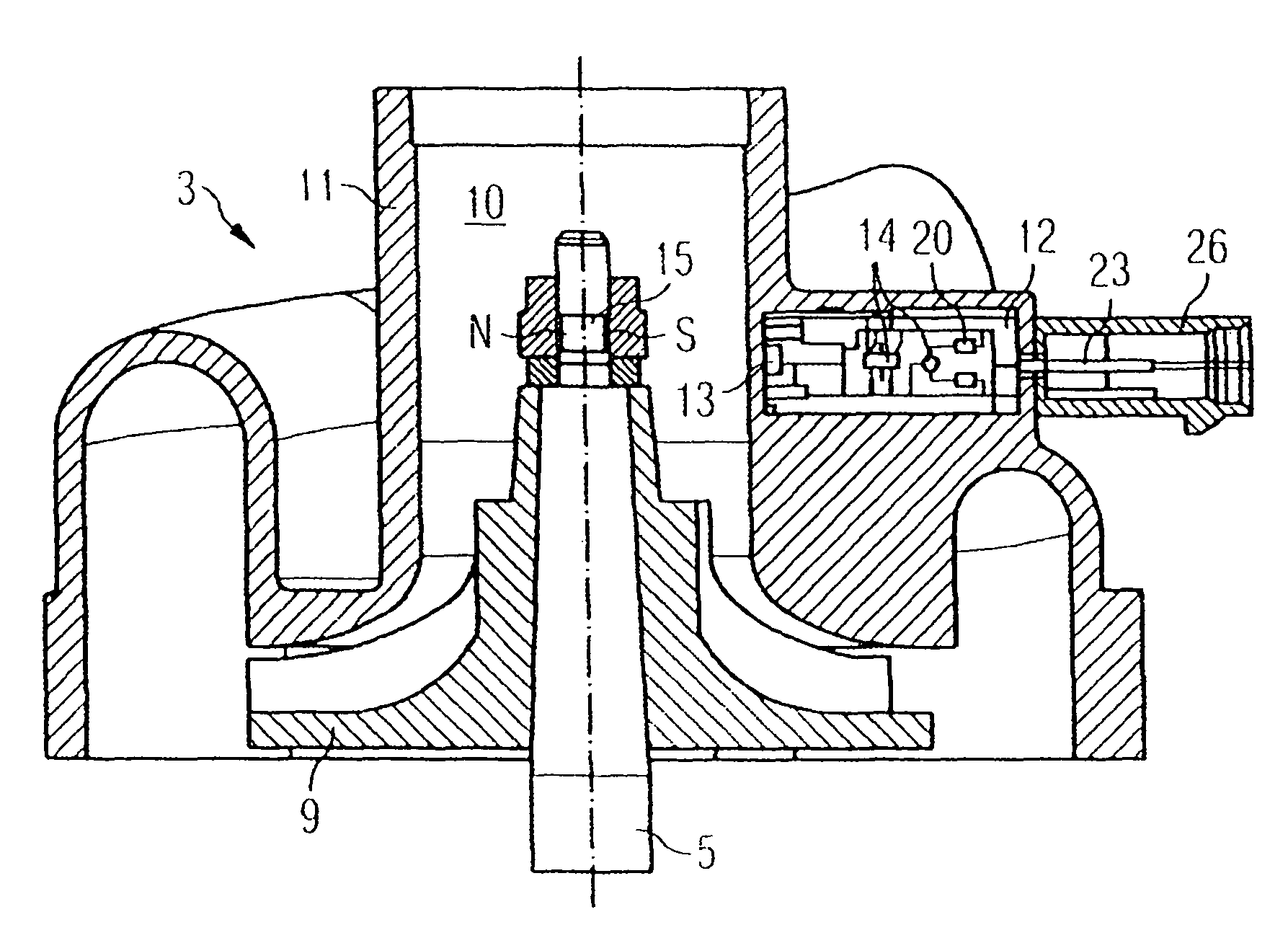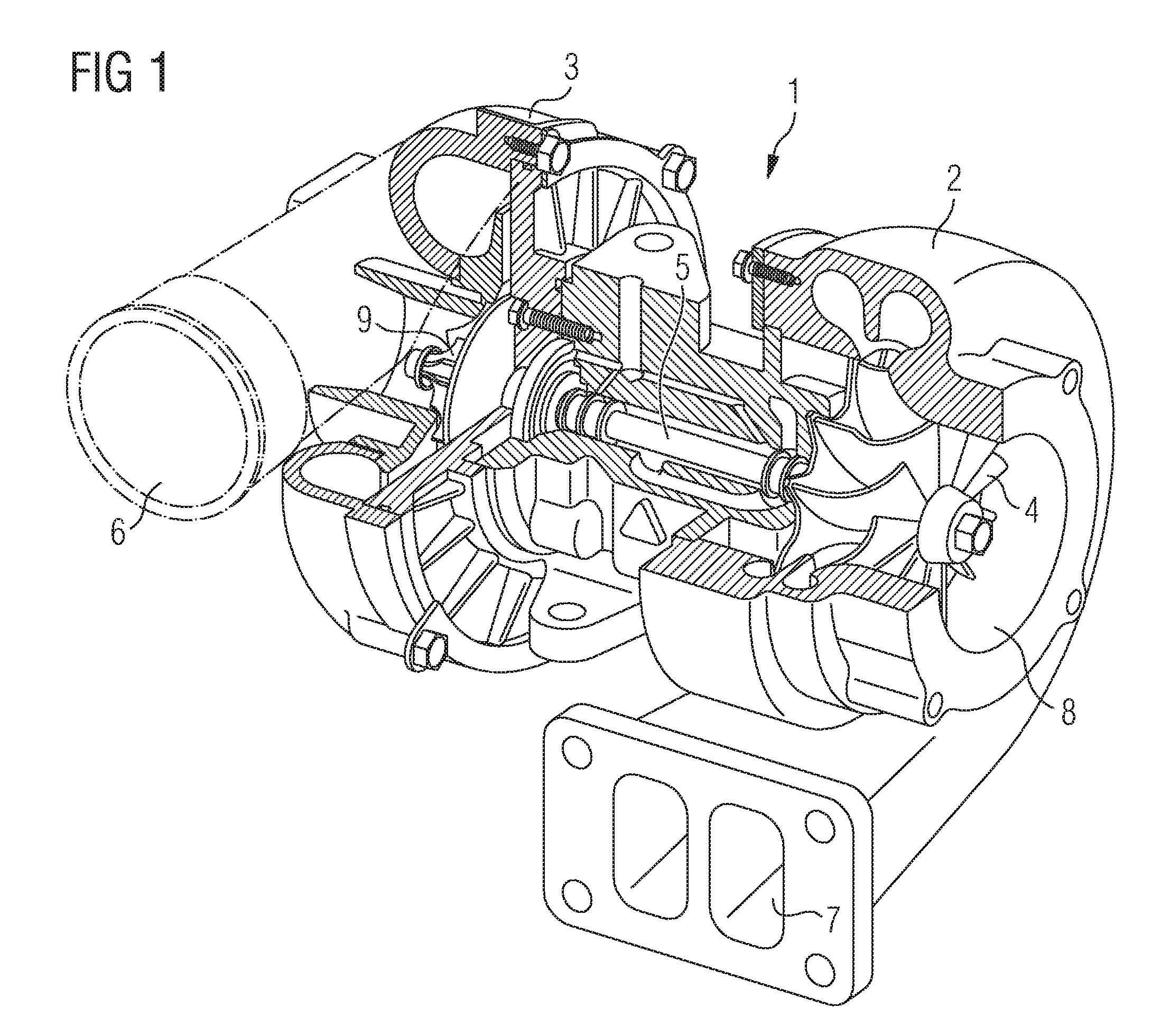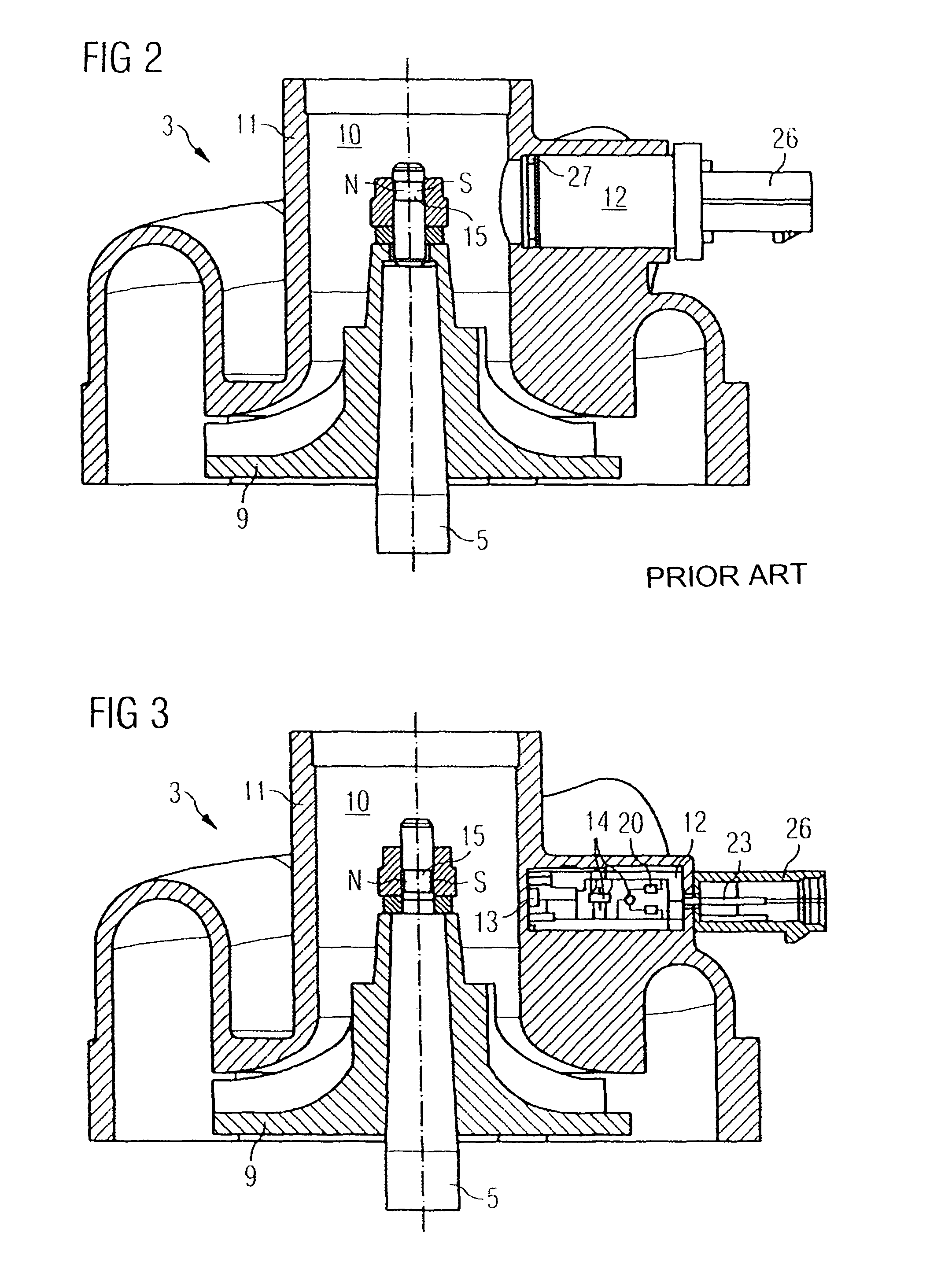Compressor casing for an exhaust gas turbocharger
a compression casing and turbocharger technology, applied in the direction of liquid fuel engines, instruments, fluid couplings, etc., can solve the problems of swept volume, increased engine speed, increased engine speed, etc., and achieves compact and inexpensive production, especially small
- Summary
- Abstract
- Description
- Claims
- Application Information
AI Technical Summary
Benefits of technology
Problems solved by technology
Method used
Image
Examples
Embodiment Construction
[0028]FIG. 1 shows an exhaust gas turbocharger 1 with a turbine 2 and a compressor 3. The compressor wheel 9 is mounted rotatably in the compressor 3 and is connected to the turboshaft 5. The turboshaft 5 is also mounted rotatably and is connected at its other end to the turbine wheel 4. Hot exhaust gas from an internal combustion engine (not shown here) is admitted to the turbine 2 via the turbine inlet 7, the turbine wheel 4 being set in rotation. The exhaust gas flow leaves the turbine 2 through the turbine outlet 8. The turbine wheel 4 is connected to the compressor wheel 9 via the turboshaft 5. The turbine 2 thus drives the compressor 3. Air is aspirated into the compressor 3 through the air intake 10 and supplied via the air outlet 6 to an internal combustion engine (not shown here).
[0029]FIG. 2 shows the compressor 3 of an exhaust gas turbocharger 1 with a sensor 12 for measuring the rotational speed of the turboshaft 5 according to the prior art. The exhaust gas turbocharger...
PUM
| Property | Measurement | Unit |
|---|---|---|
| Speed | aaaaa | aaaaa |
Abstract
Description
Claims
Application Information
 Login to View More
Login to View More - R&D
- Intellectual Property
- Life Sciences
- Materials
- Tech Scout
- Unparalleled Data Quality
- Higher Quality Content
- 60% Fewer Hallucinations
Browse by: Latest US Patents, China's latest patents, Technical Efficacy Thesaurus, Application Domain, Technology Topic, Popular Technical Reports.
© 2025 PatSnap. All rights reserved.Legal|Privacy policy|Modern Slavery Act Transparency Statement|Sitemap|About US| Contact US: help@patsnap.com



